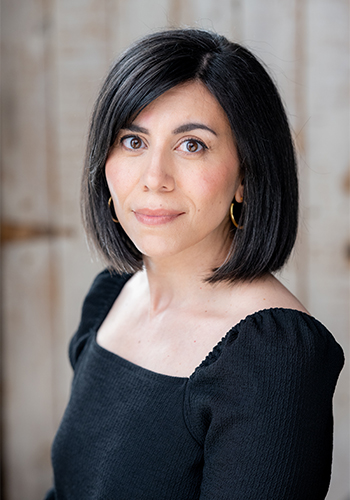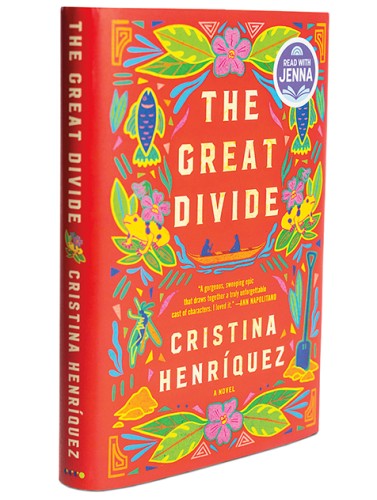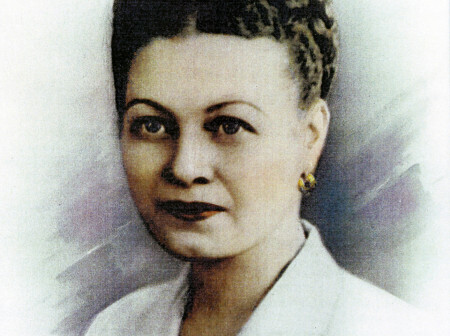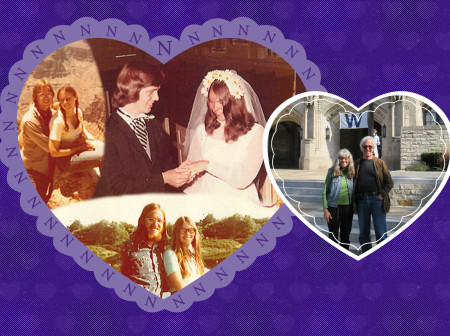Cristina Henríquez’s latest novel, The Great Divide, was decades in the making.
Growing up, Henríquez ’99 and her family regularly visited Panama, her father’s home country. Those visits often included a day trip to the Panama Canal. “We would sit there in the blazing sun,” she says, “and watch ships achingly, slowly inch their way through the locks.” To her, the canal was a landmark like any other, a fixture of her summer vacations. But as she grew older, she wondered about its history.

Cristina Henríquez Credit: Brian McConkey Photography
Henríquez had the idea for a story centered around the Panama Canal long before she published her first collection of short stories set in Panama, Come Together, Fall Apart (2006). But it wasn’t until many years later that she began writing what would become The Great Divide.
Set in 1907, at the height of the canal’s construction, the book opens as 16-year-old Ada Bunting arrives in Panama from Barbados looking for work. She sees Omar, a young Panamanian, collapse in the street and rushes to his aid. John Oswald, an American working to eradicate malaria in Panama, witnesses her assistance and offers Ada a job caring for his sick wife. The novel follows Ada, Omar, John and several other characters as the canal’s construction shapes each of their lives. Though the characters in the novel are fictional, Henríquez spent time at libraries and museums in Panama studying source materials to help contextualize their stories.
While writing The Great Divide, Henríquez always kept two books on her desk. The first was One Hundred Years of Solitude by Gabriel García Márquez, a gift from her father, Pantaleon Henríquez III ’76 MS. The second was The Known World by Edward P. Jones. “That book was my constant companion,” she says of The Known World, a historical novel set in the antebellum South. “Every day I would read a few pages of [it], and that was just the nourishment I needed,” Henríquez says. “[It taught me] so much about how to move through time, how to handle different points of view. His language is so beautiful.”

Credit: Shane Collins
Unlike her previous work, Henríquez wrote her first draft of The Great Divide by hand. “I went one day to buy a pair of pants,” she recalls, “and the store was [giving away] a free notebook with a purchase.” That night, she picked up the notebook from her nightstand and jotted down a few words. “When I woke up in the morning,” she says, “I looked at it and was like, ‘This is the best thing I’ve written in months.’ … So I decided the notebook was magic.” The experience of writing longhand was freeing and transformative, she says. “It was a way to unlock and let go of my inner critic.”
Henríquez is no stranger to confronting her inner critic. As a junior at Northwestern, she applied but was not accepted into the creative writing concentration in the English department. “I was sort of devastated,” she says. “I was like, ‘Oh, the universe is telling me something.’” Then one night at a poetry reading at the Block Museum of Art, Henríquez ran into her poetry professor, Joanna Anos ’85. Anos asked Henríquez if she would reapply to the program. “I hadn’t even known that was an option,” says Henríquez, who reapplied as a senior and was accepted.
Henríquez reconnected with Anos earlier this year when she came to a book signing for The Great Divide at the Chicago bookstore Women & Children First. “It was such a nice, full-circle moment to have her there,” says Henríquez.



Reader Responses
“The Great Divide” is a fine novel about Panama’s residents during the canal building. I lived there for seven years during the treaty renegotiation in the 1970s. I taught then at Florida State University–Panama, and my husband ran Kraft Foods for Central America. We hosted visiting senators who were deciding their vote on the canal issue. I thank Ms. Henríquez for her vivid descriptions of conditions and life for ordinary residents at that time. She evoked many memories for this lover of the isthmus.
—Carmen Alden Cunningham Hilton Head, S.C., via Northwestern Magazine
No one has commented on this page yet.
Submit a Response